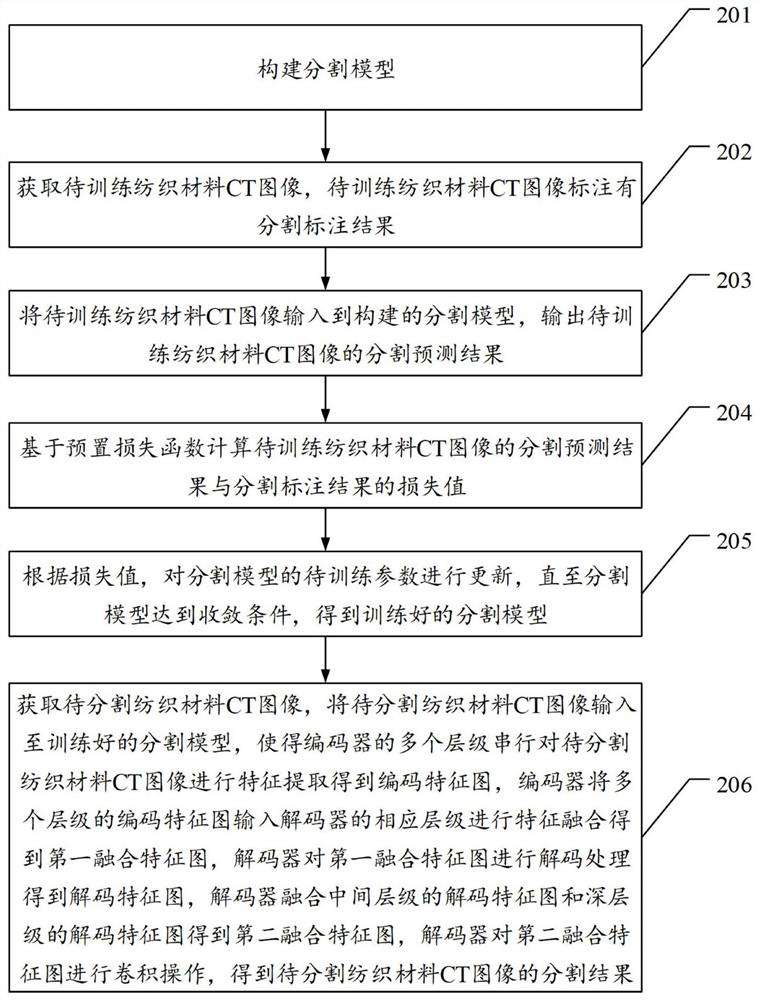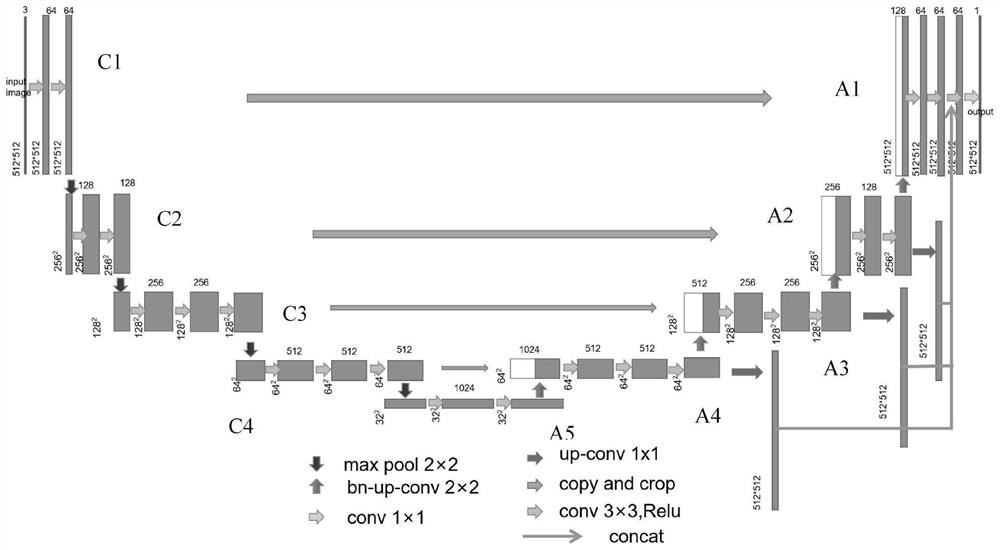Textile material CT image segmentation method and device based on convolutional neural network
A convolutional neural network and textile material technology, applied in neural learning methods, biological neural network models, image analysis, etc., can solve the problems of difficult to reproduce segmentation results, cumbersome segmentation process, and difficult segmentation, and achieve enhanced semantic information. and detailed information, solving the effect of difficult segmentation and fast segmentation efficiency
- Summary
- Abstract
- Description
- Claims
- Application Information
AI Technical Summary
Problems solved by technology
Method used
Image
Examples
Embodiment Construction
[0042] This application provides a textile material CT image segmentation method and device based on a convolutional neural network, which is used to solve the problem that the existing textile material CT image segmentation method adopts manual segmentation. The segmentation is difficult, the segmentation process is cumbersome, time-consuming and laborious, The segmentation results largely depend on the experience and knowledge of the operator, and the segmentation results are difficult to reproduce technical problems.
[0043] In order to enable those skilled in the art to better understand the solution of the present application, the technical solution in the embodiment of the application will be clearly and completely described below in conjunction with the accompanying drawings in the embodiment of the application. Obviously, the described embodiment is only It is a part of the embodiments of this application, not all of them. Based on the embodiments in this application,...
PUM
 Login to View More
Login to View More Abstract
Description
Claims
Application Information
 Login to View More
Login to View More - R&D
- Intellectual Property
- Life Sciences
- Materials
- Tech Scout
- Unparalleled Data Quality
- Higher Quality Content
- 60% Fewer Hallucinations
Browse by: Latest US Patents, China's latest patents, Technical Efficacy Thesaurus, Application Domain, Technology Topic, Popular Technical Reports.
© 2025 PatSnap. All rights reserved.Legal|Privacy policy|Modern Slavery Act Transparency Statement|Sitemap|About US| Contact US: help@patsnap.com



